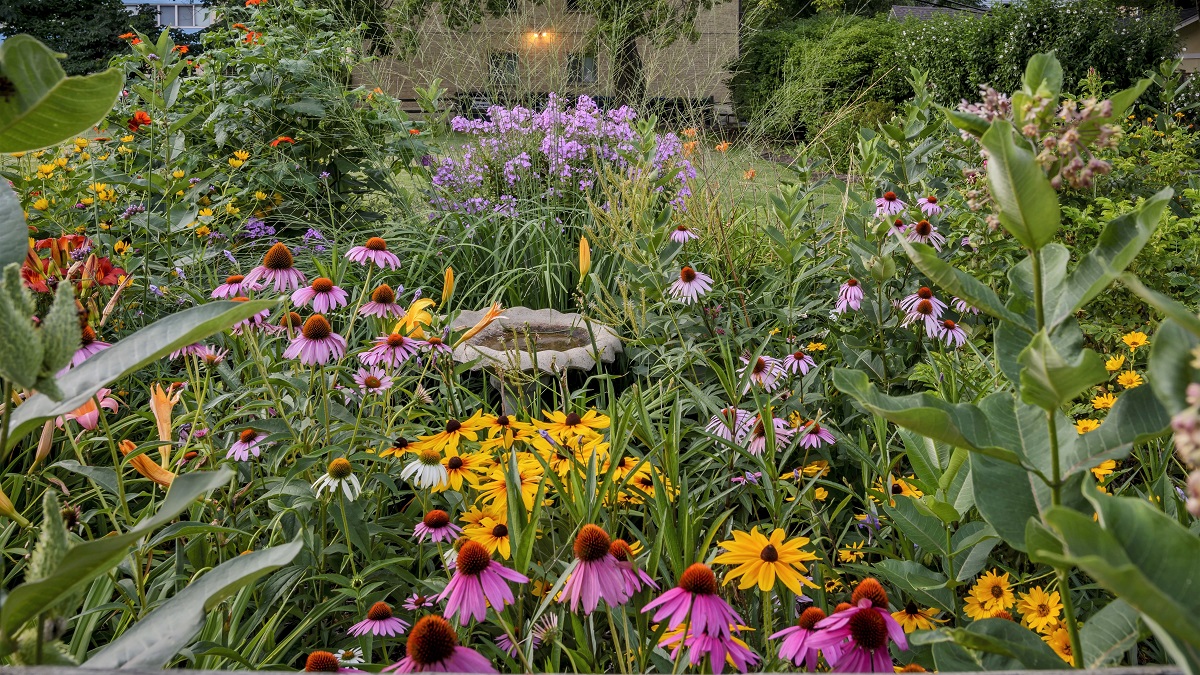Transform Your Garden: Eco-Friendly Designs with Native Plants

Imagine stepping into a lush, vibrant garden that not only delights your senses but also nurtures the environment. Picture a space where every plant, every flower, and every leaf contributes to a harmonious ecosystem. This is the essence of eco-friendly garden designs with native plants. By embracing sustainable landscaping, you can create a garden that is both beautiful and beneficial for local wildlife and the environment. Let's dive into the world of native flora and discover how you can transform your garden into an eco-friendly oasis.
The Benefits of Eco-Friendly Garden Designs with Native Plants
Why Choose Native Plants?
Native plants are the backbone of eco-friendly garden designs. These plants are indigenous to your region, meaning they have evolved to thrive in your local climate and soil conditions. By choosing native flora, you are supporting local biodiversity and creating a habitat for native wildlife. Native plants require less water, fertilizer, and pesticides, making them a sustainable and environmentally friendly choice.
Sustainable Landscaping: A Holistic Approach
Sustainable landscaping is more than just planting a few native species. It's a holistic approach that considers the entire ecosystem of your garden. This includes soil health, water conservation, and the use of organic gardening practices. By adopting sustainable landscaping techniques, you can reduce your garden's environmental footprint and create a space that is both beautiful and functional.
Designing Your Eco-Friendly Garden
Planning Your Garden Layout
The first step in creating an eco-friendly garden is planning your layout. Consider the natural features of your garden, such as sunlight, shade, and soil type. Group plants with similar water and light requirements together to create efficient watering zones. This not only saves water but also ensures that your plants thrive.
Choosing the Right Native Plants
Selecting the right native plants is crucial for a successful eco-friendly garden. Research local plants that are well-suited to your garden's conditions. For example, if you live in a dry climate, choose drought-tolerant native species. If your garden is shady, opt for shade-loving natives. By choosing the right plants, you can create a garden that is both low-maintenance and visually appealing.
Incorporating Organic Gardening Practices
Organic gardening practices are essential for an eco-friendly garden. This includes using compost and organic fertilizers to enrich your soil. Avoid chemical pesticides and herbicides, which can harm beneficial insects and wildlife. Instead, use natural pest control methods, such as companion planting and beneficial insects.
Maintaining Your Eco-Friendly Garden
Water Conservation Techniques
Water conservation is a key aspect of eco-friendly garden designs. Install a rain barrel to collect rainwater for irrigation. Use drip irrigation systems to deliver water directly to plant roots, reducing evaporation and runoff. Mulch your garden beds to retain moisture and suppress weeds. These techniques not only save water but also promote healthy plant growth.
Encouraging Biodiversity
A thriving eco-friendly garden is a haven for local wildlife. Plant a variety of native flowers to attract pollinators, such as bees and butterflies. Provide nesting sites for birds and small mammals. Create a pond or water feature to support aquatic life. By encouraging biodiversity, you can create a garden that is teeming with life and activity.
Seasonal Care and Maintenance
Caring for your eco-friendly garden involves seasonal tasks, such as pruning, deadheading, and mulching. Regular maintenance ensures that your plants stay healthy and your garden looks its best. Use organic methods for pest and disease control, and be mindful of the natural cycles of your native plants.
Embracing the Beauty of Native Flora
The Aesthetic Appeal of Native Plants
Native plants offer a unique aesthetic appeal that is often overlooked. From vibrant wildflowers to stately trees, native flora can add a touch of natural beauty to your garden. Embrace the wild and untamed look of native plants, and let your garden reflect the natural landscape of your region.
Creating a Sense of Place
An eco-friendly garden with native plants creates a sense of place. It connects you to the local environment and celebrates the unique characteristics of your region. By incorporating native flora, you can create a garden that is not only beautiful but also meaningful and culturally significant.
Conclusion
Transforming your garden into an eco-friendly oasis with native plants is a rewarding journey. By embracing sustainable landscaping, choosing the right native flora, and incorporating organic gardening practices, you can create a garden that is both beautiful and beneficial for the environment. So, why not take the first step today and start planning your eco-friendly garden? Your garden, and the planet, will thank you.

FAQs
What are the benefits of using native plants in my garden?
Using native plants in your garden offers numerous benefits, including reduced water and fertilizer requirements, support for local wildlife, and improved soil health. Native plants are also well-adapted to your local climate, making them a low-maintenance choice.
How can I incorporate organic gardening practices into my eco-friendly garden?
Incorporating organic gardening practices involves using compost and organic fertilizers, avoiding chemical pesticides, and employing natural pest control methods. Companion planting and beneficial insects can also help maintain a healthy garden ecosystem.
What are some water conservation techniques for an eco-friendly garden?
Water conservation techniques include installing a rain barrel, using drip irrigation systems, and mulching garden beds. These methods help reduce water usage and promote healthy plant growth.
How can I encourage biodiversity in my eco-friendly garden?
Encouraging biodiversity involves planting a variety of native flowers to attract pollinators, providing nesting sites for birds and small mammals, and creating a pond or water feature. These elements support a diverse range of wildlife and create a thriving ecosystem.
What are some seasonal care and maintenance tasks for an eco-friendly garden?
Seasonal care and maintenance tasks include pruning, deadheading, and mulching. Regular maintenance ensures that your plants stay healthy and your garden looks its best. Using organic methods for pest and disease control is also essential for a thriving eco-friendly garden.

Ready to transform your garden? Click here to learn more about eco-friendly garden designs with native plants and start your journey towards a sustainable and beautiful outdoor space.
0 Response to "Transform Your Garden: Eco-Friendly Designs with Native Plants"
Post a Comment